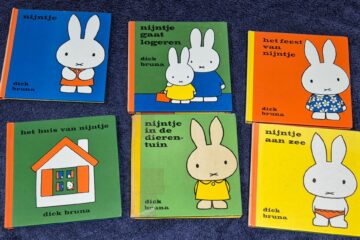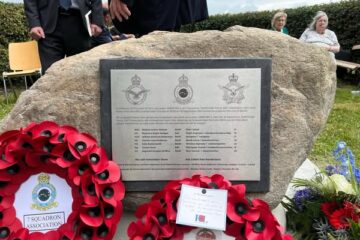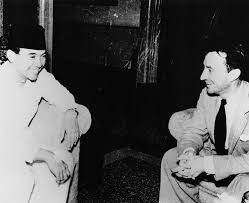History
Already in the 1800 we see Dutch people settling in Australia. A rather famous early immigrant was Willem Hendrik Paling who settled in Sydney in 1853. He established music stores in Sydney and Brisbane, wrote music, was a teacher and a performer.
The 1911 caucus lists only 650 Dutch born in Australia.
In 1913 the Netherlands Association Emigration (Nederlandse Vereniging Landverhuizing) was established to promote Dutch emigration. After a merger with the Emigration Centre Holland (Emigratie Centrale Holland) in 1931 they formed the Netherlands Emigration Foundation (Stichting Landverhuizing Nederland).
The newspaper article below from 1929 is an indication of the early efforts.
The 1933 caucus stated 1300 born in Netherlands and 200 born in Netherlands East Indies.
Migrants in 1930s required £40 landing money, which was an obstacle for many. A better agreement was reached in 1938. After WW II this agreement was picked up again and a separate scheme for ex-service men was introduced and landing money was lowered. This resulted in 1946 in 3600 applications, a significant number of them Dutch military personnel from Java. (see NAA files below).
Three million Dutch left the Netherlands
| After WWII, in 1946, almost a quarter of the Dutch were considering leaving their native land, according to the director of the Netherlands Emigration Foundation, and within a year that number increased to a third of the population. They included farmers who needed agricultural land, as well as craftsmen, civil servants and members of the liberal professions, especially young people aged between 25 and 35. Many Dutch people actually went ahead and emigrated; over 81,000 in the peak year of 1952. In total, nearly three million Dutch citizens left in the years 1946-1992, of whom more than 763,000 left for Canada, the United States, South Africa, Australia, New Zealand, Israel and Brazil after 1948. |
The agreement of 1938 was followed in 1951 with a formal agreement between Netherlands and Australia. (The first one of that nature between Australia and a country other than Britain). Netherlands Australia Migration Agreement – 1951
The Netherlands Emigration Foundation was in 1952 renamed the Dutch Emigration Service (Nederlandse Emigratiedienst).
Top immigration years 1949-1970
The key period of Dutch Emigration was between 1949 and 1970, in all 160,000 Dutch people migrated to Australia during that period. During this period the Netherlands was one of the top ten countries of people migrating to Australia. In 1970 the focus changed from integration to building a multicultural society. During this period Victoria received the largest number of Dutch migrants, well over 25%.
- 1952 – 16.000 Dutch immigrants.
- In 1958 Adriana Zevenbergen was the 100.000st immigrant from the Netherlands
- In 1961 – 102.000 Dutch born emigrants in Oz (highest number in percentage of all immigrants)
- In 2022 ca.380.000 with Dutch descent in Australia.
Statistics from the 1981 Census for Dutch in NSW
The following information is from a booklet published by the Federation of Netherlands Societies Ltd. in February 1985. The research for this booklet was done by Mijntje Hage. (use the rotator in the pdf).
Dutch in NSW -2005
Dutch Australians – demographics 2006
In the 2006 census, birthplace was enumerated as was date of arrival in Australia for those not born in Australia. For the major post-war period non-English speaking immigrant groups enlarged by the arrival of immigrants to Australia after World War II, they are still major demographic groups in Australia.
The distribution, by state and territories, show that Victoria continues to have the largest number with 22,830 followed by New South Wales (18,820), Queensland (15,260), Western Australia (10,110), Adelaide (8,500) and Tasmania (3,000).
| Ethnic group | Persons born overseas | Arrived 1979 or earlier | Aged 60 years and over This compares with 18% of Australian residents who were aged 60 or over at the time of the census | Australian citizens[ |
| Dutch Australian | 78,924 | 62,495 or 79% | 52% | 59,502 or 75% |
The Dutch in Victoria
By 1911, 186 Netherlands-born people lived in Victoria.
The growth of the Dutch community in Victoria in the post-war period was dramatic. In 1947, 625 Netherlands-born people were recorded; by 1954, the number had increased to 15,996. Within five years the community had more than doubled to 36,284.
In 2016, the Victorian population was 19,814, the largest number of Netherlands-born people of any state in Australia. 65% of the community was Christian; 66% spoke English at home, and 32% spoke Dutch. Nearly half of those employed worked in professional roles, while many others were employed in clerical, sales, service, production and transport-related roles.
the Dutch community is focussed in the outer metropolitan areas of Melbourne, including the Dandenongs, Frankston and Berwick.
See also: Dutch in Victoria 1947–1980: Community and ideology
Melbourne’s Dutch community at a glance – 2011
- 18% of Dutch migrants choose to live in Melbourne (approx)
- 1300 Dutch people migrated from the Netherlands to Victoria since 2011.
- Average age: 64 years.
- 45% of Dutch migrants are families with no children and 20% are families with children (approx)
- 76% have Australian citizenship.
Dutch Australians – demographics 2021
Dutch Australians refers to Australians of Dutch ancestry. They form one of the largest groups of the Dutch diaspora outside Europe. At the 2021 census, 381,946 people nominated Dutch ancestry (whether alone or in combination with another ancestry), representing 1.5% of the Australian population. Based on the same census 66,481 Australian residents were born in the Netherlands.
Dutch ststistics 2016 census
The National Archives of Australia
Webinar: Dutch-Australian Shared Stories
At a webinar on 7 November 2022 the National Archives of Australia (naa.gov.au) ,launched it digital collection of Dutch documents.
The NAA only digitises (and include on their website) government documents. For other documents contact should be sought with National or State libraries or migration museums. In 2022 they held 11000 Dutch documents of which 1,000 are digitised, there are furthermore five videos.
The key collection areas are:
- Maritime
- Military
- Migration
- Mercantile
Focus on 2nd WW. Evacuation of military and civilians from Dutch Indies to Australia. Many still employed by Dutch government. After war people from the Japanese camps to Australia.
Dutch migrants were artisans, traders, farmers. Many were self-employed and established a large number of Dutch-Australian businesses. 1960 government questionnaire saw many Dutch business owners, who said there were good opportunities, provided they worked very hard.
Supported by Dutch Embassy
The digital project has been assisted by the Dutch Ministry of Foreign Affairs, through the Embassy of Kingdom of the Netherlands, Australia.
For more information: Netherlands NAA
Other DACC information
Dutch immigrant ships to Australia
Dutch Migrants at Bonegilla Migrant Camp – Victoria
Wacol (Brisbane) Remembered 1949-1987
Other Migration history on the DACC database, including personal stories
Nederlandse emigratieliteratuur m.b.t. Australië
Other sources:
Dutch immigrants to Australia Database
Immigration History from Netherlands to Victoria
Dutch | The Dictionary of Sydney


